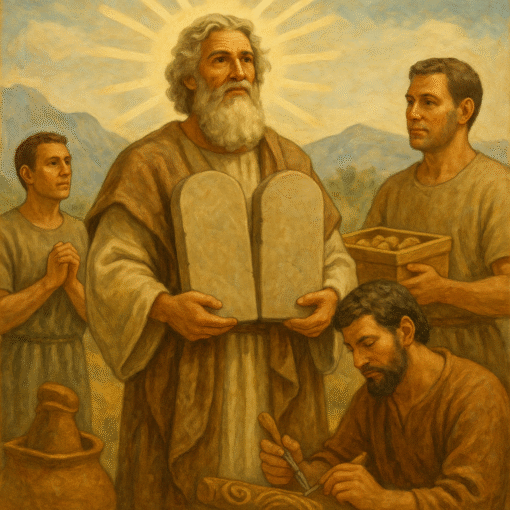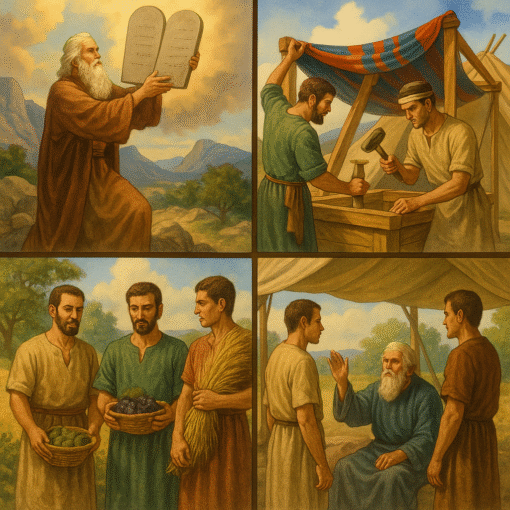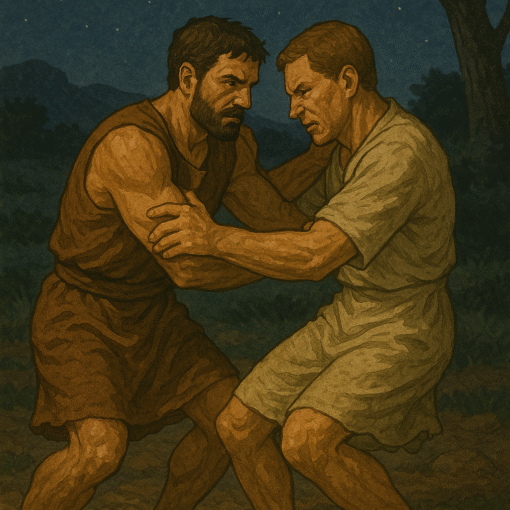Exodus 33 starts out with Moses meeting with God “face to face.” It ends with “no man can see God and live.” How is this not a contradiction?
At first glance, Exodus 33 does seem to present a tension:
-
Verse 11: “And the LORD spake unto Moses face to face, as a man speaketh unto his friend.”
-
Verse 20: “Thou canst not see my face: for there shall no man see me, and live.”
Here’s how this can be understood in harmony:
1. “Face to Face” as an Expression
The phrase “face to face” in verse 11 is a Hebrew idiom. It doesn’t necessarily mean Moses saw God’s literal face, but that he had direct, personal, and intimate communication with God—unlike other prophets who received visions, dreams, or intermediaries (cf. Numbers 12:6–8).
-
In other words, Moses’ interaction with God was clear and immediate, “as a man speaketh unto his friend.”
2. The Invisibility of God’s Essence
In verse 20, God is referring to His unveiled, full glory—His divine essence. No mortal, in a fallen and sinful state, can behold God in His fullness and survive (cf. John 1:18; 1 Timothy 6:16).
-
God’s absolute holiness would overwhelm and destroy sinful humanity.
-
So, while Moses had closer fellowship than anyone else, he still could not see God’s unmediated glory.
3. God’s Accommodation
When Moses asks to see God’s glory (Exodus 33:18), God places him in the cleft of the rock and allows him only to see His “back parts” (vs. 23). This shows God revealed Himself partially—enough to assure Moses of His presence, but not His full essence.
-
This is God accommodating Himself to human weakness.
4. Christ as the Mediator
From a New Testament perspective, Jesus Christ is the one who makes God visible:
-
“No man hath seen God at any time; the only begotten Son… he hath declared him” (John 1:18).
-
Moses’ “face-to-face” relationship foreshadows the perfect revelation of God in Christ, who is “the express image of his person” (Hebrews 1:3).
So, no contradiction exists.
-
Verse 11 refers to intimate fellowship and clear communication.
-
Verse 20 refers to the impossibility of mortals beholding God’s full unveiled glory.
Commentary Survey on Exodus 33
1. Matthew Henry’s Commentary
-
On verse 11 (“face to face”):
Henry explains that this phrase denotes familiarity, openness, and clarity in God’s dealings with Moses. While other prophets had dreams and visions, Moses received direct revelations. This was God speaking “plainly, and not in dark speeches” (Numbers 12:8).
-
On verse 20 (“no man can see me and live”):
Henry stresses that God’s full glory is unapproachable. Even Moses, the most privileged prophet, could not behold God’s unveiled essence. God grants him a glimpse of His “back parts”—that is, a partial manifestation—to confirm His presence without overwhelming Moses’ humanity.
Summary from Henry: There’s no contradiction—verse 11 is figurative language describing the clarity of God’s communication, while verse 20 refers to God’s essential glory, which no man can endure.
2. J. Vernon McGee (Thru the Bible)
-
McGee often emphasizes the distinction between relationship and revelation.
-
On verse 11:
McGee points out that “face to face” means close fellowship, the kind of direct communion a friend has with a friend. It does not mean Moses literally saw the physical face of God.
-
On verse 20:
McGee notes that God is spirit (John 4:24), invisible in His essence. What Moses experienced were manifestations of God’s presence—not His full being. God’s holiness is such that if Moses had seen His glory in totality, Moses would have perished instantly.
Summary from McGee: Moses had the closest human fellowship possible, but not a full vision of God’s essence. God revealed Himself to the degree Moses could bear.
3. Paul Chappell (Contemporary Baptist Commentary Style)
-
Chappell, in his practical teaching approach, emphasizes the pastoral application of these verses.
-
On verse 11:
He highlights that Moses’ “face to face” communion is an example of how God desires intimate fellowship with His people. This phrase shows friendship with God, not literal sight.
-
On verse 20:
Chappell explains that God’s holiness is too overwhelming for sinful humanity. The tension between verses 11 and 20 teaches us that while we can know God personally and directly, we must also revere His holiness.
-
He ties this to Christ:
“In Jesus Christ, we behold the glory of God in a way Moses could not, because Christ is God revealed in the flesh” (John 1:14).
Summary from Chappell: The two statements teach balance—God is both intimately approachable and infinitely holy.
Theological Harmony
-
Verse 11 (“face to face”) = idiom for clear, direct fellowship with God.
-
Verse 20 (“no man can see me and live”) = the reality that God’s essential, unveiled glory is unseeable to mortal man.
-
Christ bridges this: through Him we see God without being destroyed (John 14:9).
So, Exodus 33 is not contradictory but instead a layered revelation:
-
Closeness of fellowship (v.11),
-
Limits of human ability (v.20),
-
Partial glimpse granted by grace (v.23),
-
Fulfillment in Christ (John 1:18; Heb. 1:3).
How useful was this post?
Click on a star to rate it!
Average rating 0 / 5. Vote count: 0
No votes so far! Be the first to rate this post.
We are sorry that this post was not useful for you!
Let us improve this post!
Tell us how we can improve this post?



